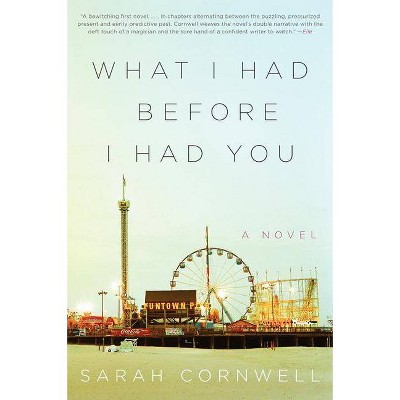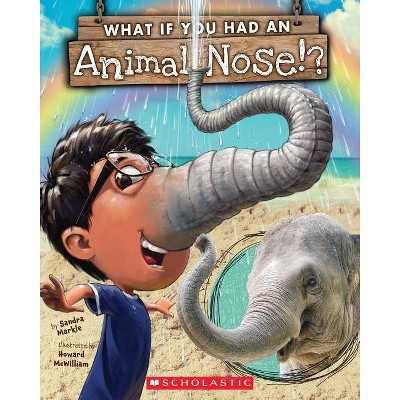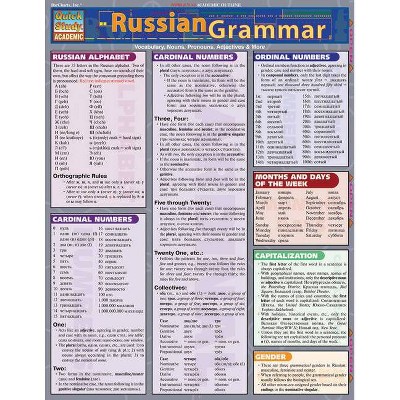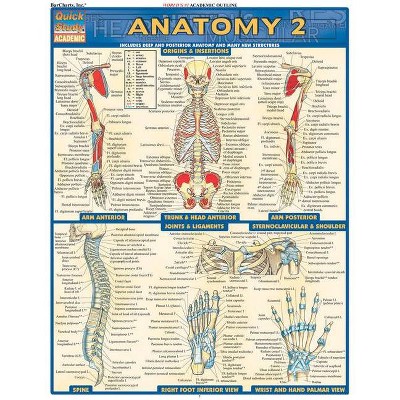Becoming the Math Teacher You Wish You'd Had - by Tracy Zager (Paperback)

Similar Products
Products of same category from the store
AllProduct info
<p/><br></br><p><b> Book Synopsis </b></p></br></br>Ask mathematicians to describe mathematics and they'll use words like "playful", "beautiful", and "creative". Pose the same question to students and many will use words like "boring", "useless", and even "humiliating". In <i>Becoming the Math Teacher You Wish You'd Had</i>, Tracy Zager helps teachers close this gap by making math class more like mathematics. Tracy has spent years working with highly skilled math teachers in a diverse range of settings and grades. You'll find this book jam-packed with new ideas from these vibrant classrooms. <br> <ul><li><b>TEACHING STUDENT-CENTERED MATHMATICS: </b> Tracy Zager outlines a problem-solving approach to mathematics for elementary and middle school educators looking for new ways to inspire student learning</li></ul> <ul><li><b>BIG IDEAS, PRACTICAL APPLICATIONS: </b>This math book contains dozens of practical and accessible teaching techniques that focus on fundamental math concepts, including strategies that simulate connection of big ideas; rich tasks that encourage students to wonder, generalize, hypothesize, and persevere; and routines to teach students how to collaborate</li></ul> <ul><li><b>KEY TOPICS FOR ELEMENTARY AND MIDDLE SCHOOL TEACHERS: </b> <i>Becoming the Math Teacher You Wish You'd Had</i> offers fresh perspectives on common challenges, from formative assessment to classroom management for elementary and middle school teachers</li></ul>All teachers can move towards increasingly authentic and delightful mathematics teaching and learning. This important book helps develop instructional techniques that will make the math classes we teach so much better than the math classes we took.<p/><br></br><p><b> Review Quotes </b></p></br></br><br>Becoming the Math Teacher You Wish You'd Had: Ideas and Strategies from Vibrant Classrooms addresses the common gap between mathematicians who perceive math as creative and fun and students who view it is boring at best and frustrating at worst, and helps teachers move students from dull math classes to more vibrant, lively productions. The author spent years with many math teachers in a wide range of settings and grades to collect the successful strategies that would reach grades K-8 through this collection. Chapters offer examples of innovative teaching methods, measurable results in improving math comprehension and usage, and include strategies, examinations of conjectures, and tips on how to lead math students to make new, exciting connections. The result is a powerful survey highly recommended for any math instructor seeking specific keys to not just teaching the basics, but making math relevant and exciting. <br> Midwest Book Review<br><br>I am not a math person. That side of my brain totally freezes once I enter a math class or have a problem in front of me. I guess I haven't had good luck when it comes to figuring out why <i>x</i> and y are in the same problems as numbers. But this might just be because I haven't had a successful math class yet. <p/> As a pre-service teacher preparing for a career that might include teaching math in a self-contained classroom, I actually felt hopeful again after reading <i>Becoming the Math Teacher You Wish You'd Had</i> and encouraged to learn math from the strategies Tracy Johnston Zager enthused about. <p/><b>What I found inside</b> <br> She opens the book with a personal story about how her mother used to become stressed and drew blanks whenever a math problem would come up. Similarly, that's how I feel. But she goes on to say how incredibly skillful her mother was in math, just not in the traditional way. Rather she was adept with money and in measuring for everyday use. <br> The author understands how math should be more than just classrooms where the students knock out problem after problem with no real connection or value to the effort. That is how math has become a negative subject and why non-mathematically excited people freeze once someone even mentions the word <i>math</i>. <br> Zager offers solutions to help with the anxiety that so many of us feel, while telling engaging stories from real classrooms to help us visualize students in action. <br><b>Making connections for our learners</b> <br> In order to improve the situation in math class, Zager believes we must ask the question, "What is Math?" This might be a simple question, one that could be answered by a formal definition. However, that won't help us when it comes to teaching math to a classroom full of students who have the mindset of "math is hard and I won't ever use it!" <br> Throughout many helpful chapters, Zager explains how math must be taught with connections to instances where the students will encounter <i>such</i> a need for math that they are ready to make it their own - becoming risk-takers and asking questions rather than supplying answers. <br> Wouldn't math class have been a lot more fun if there had been a lesson on how math can be applied to the "real world" by bringing in people with different careers and having them explain what kind of math they do in their job? I would have been much more engaged with doing the work if I had known math had a purpose outside the walls of the classroom. Zager explains this concept well in a chapter on making connections, as she tells stories about different teachers who have used this strategy effectively in their classrooms. <br> As I read the book, I noticed that each time Zager stated her claim for a chapter, she always followed up by providing vivid examples with real conversations that different students have had in trying to understand the value of math. These conversations help articulate and give life to otherwise complex statements and provide us with real examples of what collaboration looks like in each instance. <br> Many of the figures in this book are actual pictures of student work and photos of lessons. These accent the conversations and examples well, engaging the readers and helping them understand what is being said. <br> The book is also very easy to follow with big headings on each concept and common questions that many teachers might ask. Each chapter is titled "Mathematicians..." to imply that any student of math is a mathematician and should be called such. <br><b>What's most important to me</b> <br> I hope to someday be an elementary school teacher who is ready and willing to teach math. <i>Becoming the Math Teacher You Wish You'd Had</i> offers me a sense of hope that I am capable of teaching a more fun and engaging math class for every student. <br> Math concepts can be hard for me to absorb when I'm learning them, not to mention trying to teach them to someone else. After reading this book, though, I have found a sense of confidence and security that I can teach this rigorous subject, and I can teach it using these inspiring strategies. <br> My goal for my students is to help them gain full ownership of mathematical learning. Using strategies like discussing the theories in math and coming up with questions (rather than just providing answers), as Tracy Johnston Zager writes about in <i>Becoming the Math Teach You Wish You'd Had</i>, makes it more likely I will succeed. <br><b><i>Emmy Avery Witham</i></b><i> is a student at College of the Atlantic in Bar Harbor, ME and is studying to be a certified teacher. She has been working with kids since she was twelve as a child care provider. Since then, she has volunteered in schools and worked in a summer camp, with ages ranging from five to ten years old.</i> <br><b><i>Reviewed by Emmy Avery Witham</i></b><br><br>This post is about Tracy Zager's most excellent book, <i>Becoming the Math Teacher You Wish You'd Had</i>. I actually finished reading it back in January, and I live-tweeted my reading as I went. The process culminated with this tweet: <p/> I've just finished reading your #becomingmath book @TracyZager. This is the bit I liked: <br> That's what I thought about it at the time, but I haven't sat down to organise my thoughts on it. Until now. <p/> I was first drawn to the book based entirely on its contents page. <p/> <br> Check this out: <br> Chapter 1: Breaking the Cycle <br> Chapter 2: What Do Mathematicians Do? <br> Chapter 3: Mathematicians Take Risks <br> Chapter 4: Mathematicians Make Mistakes <br> Chapter 5: Mathematicians Are Precise <br> Chapter 6: Mathematicians Rise to a Challenge <br> Chapter 7: Mathematicians Ask Questions <br> Chapter 8: Mathematicians Connect Ideas <br> Chapter 9: Mathematicias Use Intuition <br> Chapter 10: Mathematicians Reason <br> Chapter 11: Mathematicians Prove <br> Chapter 12: Mathematicians Work Together and Alone <br> Chapter 13: "Favourable Conditions" for All Maths Students <p/> Is this not awesome? Here was a list articulating things about maths that I know are important and yet that I've struggled to articulate all my life as a mathematician and maths educator. Many of them cut straight to the heart of the difference between how I experience mathematics and how it usually is experienced in a classroom. <p/> "Mathematicians use intuition" you say? Well, yes. Yes we do. But many a maths classroom is about following rules and avoiding the need for intuition. <p/> <br> "Mathematicians work together" you say? Well, yes. Yes we do. But so many students think maths is only a solitary activity. <p/> <br> "Mathematicians make mistakes" you say? Well, yes. Yes we do. But mistakes are feared and avoided in most maths classes. <p/> <br> "Mathemaicians connect ideas" you say? Well, yes. Yes we do. But so many maths curriculums are just so many piles of disconnected procedures, even here at my own university. <p/> The contents page promised a book about the most important aspects of mathematical work and thinking, and a hope that it would give ways to bring these into the experiences of students in all maths classrooms. <p/> And the hope was made real. <p/> Each chapter starts out comparing how mathematicians talk about what they do and what students' experience of it is. Then it moves on to detailed examples of the aspect of maths thinking in action in real classrooms, as well as strategies to encourage it both in your students and in yourself as a teacher. <p/> I didn't expect to see this last point about encouraging these attitudes and thinking in yourself as a teacher. Yet it is the most compelling feature of the book for me. Indeed, I don't think the book would have had nearly the impact it had on me (or the impact I see it having on others) without this constant message that to help your students experience maths differently, then you yourself need to experience it differently too. More than this, Tracy doesn't just make this need clear, but actively and compassionately empowers us to seek out ways to fill it. <p/> "Somewhere inside you is a child who used to play with numbers, patterns and shapes. Reconnecting with your inner mathematician will improve your teaching and benefit your students, and it will also benefit you." -- Tracy Zager, <i>Becoming the Math Teacher You Wish You'd Had, </i> p39 <br> <br> Posted on May 10, 2017 by David Butler<br><br>Tracy Zager's new book 'Becoming the Math Teacher You Wish You'd Had' is out, and it's a treat. The central tenet of this important book is to 'close the gap' by making maths class more like mathematics, orienting our students towards the habits of mind of professional mathematicians. 'Good teaching starts with us' and Tracy companionably guides us through ten practices of mathematicians: taking risks, making mistakes, being precise, rising to a challenge, asking questions, connecting ideas, using intuition, reasoning, proving, working together and alone. <br> Tracy skillfully blends academic research, illuminating classroom dialogues, the thoughts of mathematicians and maths educators, and her own perceptive observations. This seamless mix is a real strength of the book; we not only see what habits are important and why, but how they can be enacted through specific teaching strategies, and the powerful effects they have on our students' development as confident and capable mathematicians. The reader can't help but be inspired by the teachers that Tracy holds up as exemplars of good practice. These teachers have so much respect for each of their students as serious mathematical thinkers. I was struck by the extent to which they would go to adapt instruction in response to student ideas and to support them in pursuing their own line of enquiry. <br> Tracy warns early on that the book is long--and it may be--but it is also captivating! The organization is immensely practical; each chapter can be used as a self-contained guide for a particular mathematical habit. I can see myself repeatedly delving back into specific habits as the teaching year progresses. I read it cover-to-cover over a couple of days while curled up in a secluded cabin, pausing occasionally to stare out into the Australian bush and ponder what I can change in my own teaching. Some of my highlighted passages: <ul><li>From Chapter 3, Mathematicians Take Risks: '<i>When we assign problems that have a single, closed path from start to finish, we've eliminated the possibility that students will take mathematical risks. <b>There's nothing to try if everything is prescribed.</b>' </i>(pg 49)<i>. </i>In my skills-based courses, I too infrequently give students opportunities to try and be successful with their own approaches. That's something to work on.</li><li>From Chapter 4, Mathematicians Make Mistakes: '<i>If we want students to learn from mistakes, we need to teach them how.' </i>(pg 57). Tracy outlines a three-part goal: to teach students to take mistakes in their stride, to keep going when they've made a mistake, and the one I need to focus on: <i>'<b>to teach students to make the most of the knowledge and experience they gained by figuring out their mistake</b>'. </i>How can I help students gain the skills to diagnose and learn from their mistakes, by themselves?</li><li>From Chapter 5, Mathematicians Are Precise: '<b><i>Math without inquiry is lifeless, but math without rigor is aimless.</i></b><i> There is no tension between teaching students how to solve problems accurately and efficiently and teaching students how to formulate conjectures, critique reasoning, develop mathematical arguments, use multiple representations, think flexibly, and focus on conceptual understanding.' </i>(pg 80). In my problem-solving course, I deliberately swung the pendulum from the typical procedure-based courses my students had mostly experienced towards creative, collaborative problem-solving. But I also need to find the middleground, where I place as much emphasis on rigour as I do on inquiry.</li><li>From Chapter 12, Mathematicians Work Together and Alone: '<i>If a major part of doing mathematics involves interacting with other mathematicians, then a major part of teaching students mathematics must be to teach students how, why, and whether to interact with one another mathematically. Students need to learn how to ask for what they need from each other and to be what they need for each other ... <b>we need to teach students how to be good colleagues </b>...<b> it's important we honor individual thinking and working time. </b>It's not reasonable to expect students to collaborate at every moment, and that's not how mathematicians work.'</i> (pg 312). This past semester, a few students in my problem-solving course commented that they needed more opportunities to work alone first, and more strategies to work effectively with group members. I'll definitely be digging further into this chapter next year.</li></ul>And, these phrases are going straight into my repertoire: <ul><li><i>'Do you have more questions after doing this? What are you wondering about now? </i>(pg 149).</li><li><i>'What does ______ have to do with _____?' </i>(Debbie Nicols, pg 191).</li><li><i>'Remember that it's hard to find mistakes when you assume that you're right. So go back into it assuming something went wrong.' </i>(Jennifer Clerkin Muhammad, pg 284).</li><li><i>'Would you recommend that strategy to someone you like?' </i>(pg 118). </li></ul>There is so much to love about this book. The writing is both encouraging and empowering. It's labelled K-8 but Tracy offers important insights to help teachers across <i>all</i> year levels; I have been nodding furiously and making notes throughout. This particular passage had me shouting 'yes!' <br><i>'We need to give ourselves permission to say, publicly, and with delight, "I never thought about it that way before!" whether it refers to addition, fractions, or place value. It is long past time for us to respect the beauty, power, and importance of elementary mathematics, instead of having contempt for "the basics."' (pg 208)</i> <br> Listening carefully to student thinking, <i> especially about ideas I thought I understood, </i>always gives me new insight. It's why I'll never tire of teaching. <br> I can confidently say that, alongside 'Thinking Mathematically' (Mason, Burton and Stacey, 1982; 2010), Tracy's book will become a cornerstone for my teaching. It is a gift to all maths teachers. But don't just take my word for it; you can preview the book in its entirety here. The companion website promises more, and I can't wait to look around! <br> Wonder in Mathematics <br> Dr Amie Albrecht<br>
Price History
Cheapest price in the interval: 54.67 on October 27, 2021
Most expensive price in the interval: 54.67 on November 6, 2021
Price Archive shows prices from various stores, lets you see history and find the cheapest. There is no actual sale on the website. For all support, inquiry and suggestion messagescommunication@pricearchive.us




















